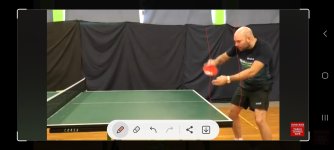This user has no status.
Well-Known Member
Hi guys, I have a basic understanding on receiving serves, like watching the point of contact on the basic more obvious serves. However, there is this particular player (shakehand) at our club that is very skilled in producing deceptive serves. It is giving me a lot of problems, because he serves short, with a variation of back spin and top spin. The deception area that he uses include adding a motion after the contact of the ball, and the stomp of the foot. He varies topspin, no spin, and backspin, so if I cant read it, the ball will go really high or into the net. Do people always contact the ball when they stomp the foot? If not, would people stomp the foot before contacting the ball or after contacting the ball to add deception to the serve? If so, what tips can you give me in trying to read the serve? Should I try to avoid listening to the stomp since it will add confusion to myself?
Thanks for the help!
Thanks for the help!












